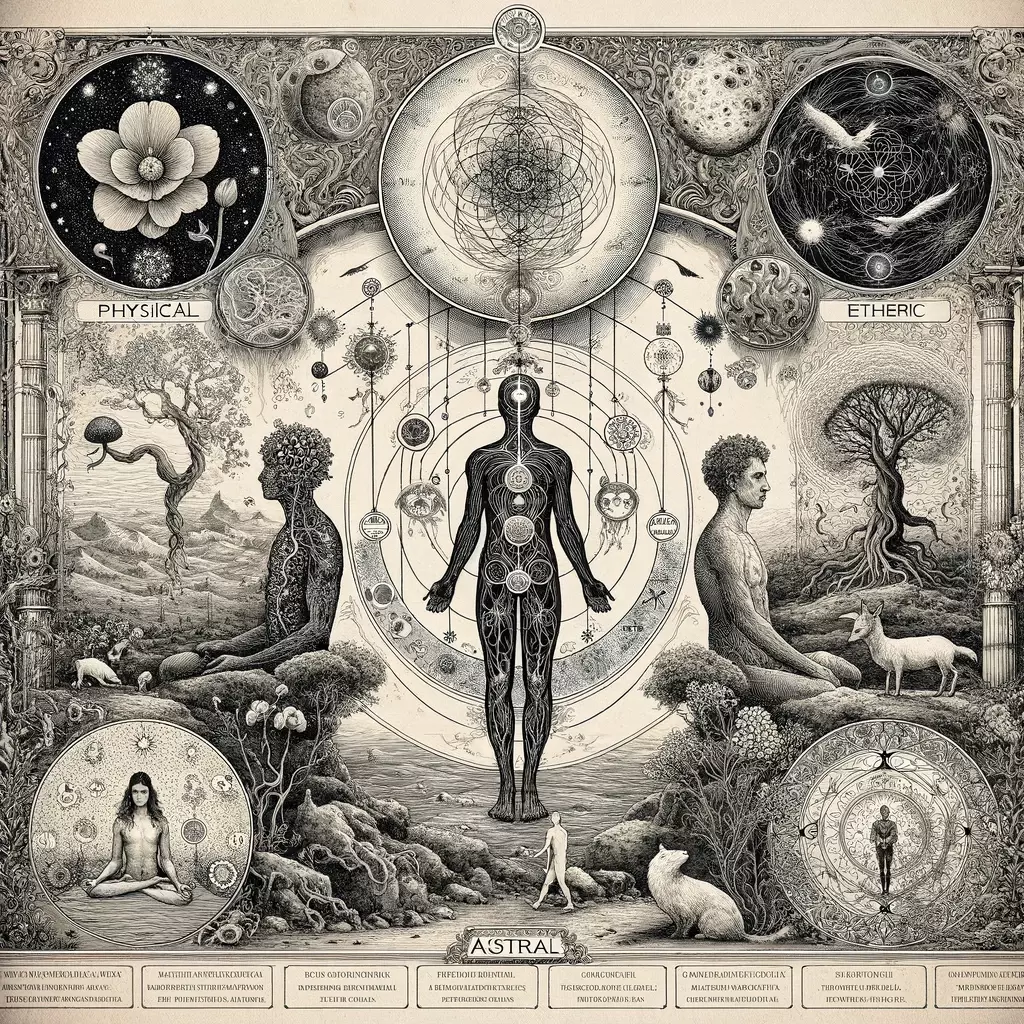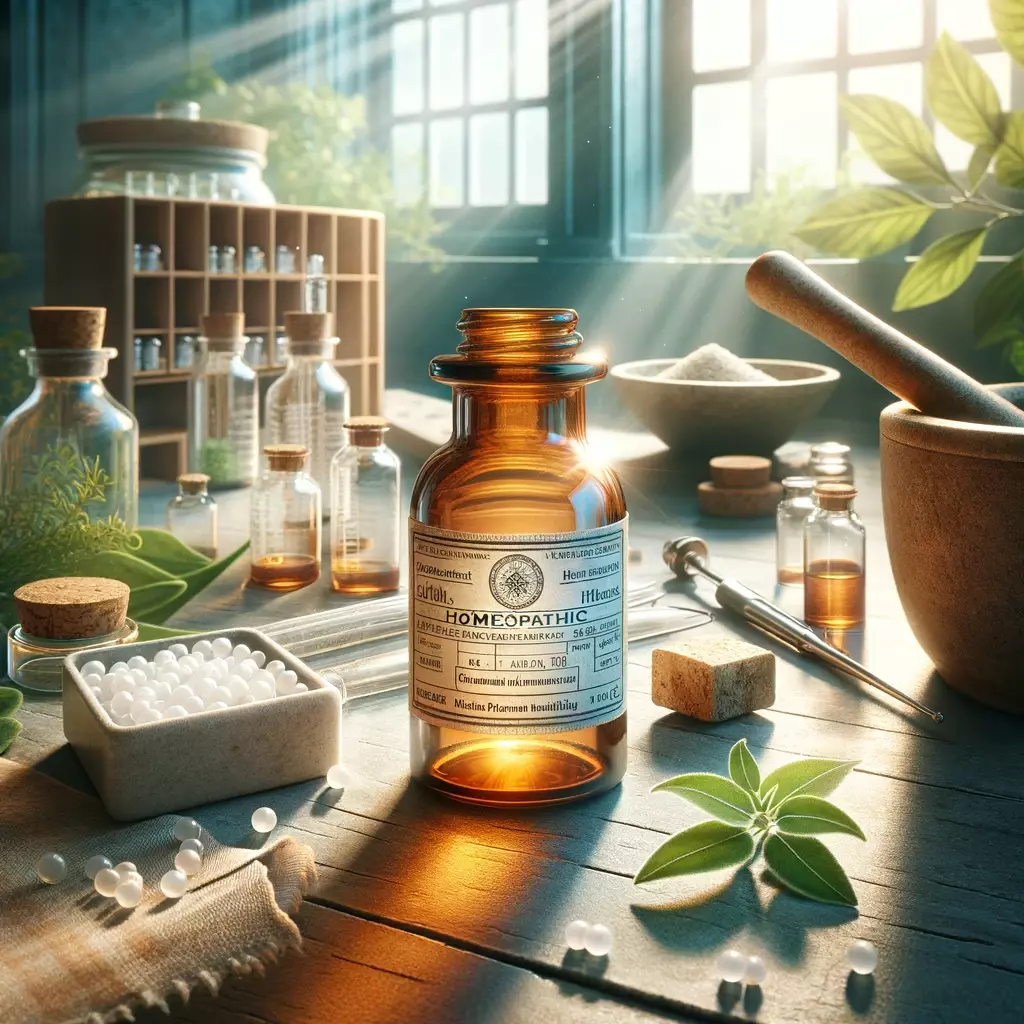
Homeopathy, a system of alternative medicine, was developed in the late 18th century by Dr. Samuel Hahnemann. Its foundational principle, the "law of similars" or "like cures like," suggests that a substance causing symptoms of a disease in healthy individuals could be used to cure similar symptoms in sick individuals. This concept was encapsulated by Hahnemann in the term "Homeopathy," derived from the Greek words "homoios" (similar) and "pathos" (suffering).
Hahnemann's observation led him to believe that the efficacy of this approach, much like the Law of Gravity, relies on a natural and consistent law of nature. Just as one can predict the fall of a rock thrown into the air due to gravity, Hahnemann posited that the law of similars operates with a similar constancy in curing diseases.
Homeopathy involves diluting substances to such a degree that the original material might not be present in the final remedy. Proponents argue that the process of dilution and succussion (vigorous shaking) imbues the water or alcohol base with the "memory" of the original substance, thus making it effective in treating disease.
In contrast, Hahnemann criticized the conventional medical practices of his time, which he termed "Allopathy." Allopathic medicine, from the Greek "allos" (opposite) and "pathos" (suffering), involves treating diseases with substances that produce effects different from those of the disease itself. Hahnemann argued that such treatments, including the use of herbs, drugs, and vitamins, often suppress or palliate symptoms without addressing the root cause of the disease.
Homeopathy's approach to healing is holistic, aiming to stimulate the body's own healing responses. It considers the patient's physical and psychological state, offering a personalized treatment. Despite being a subject of controversy and skepticism, especially regarding its scientific validity and the principle of dilutions, homeopathy has remained a popular alternative treatment method globally, with a significant number of practitioners and patients advocating for its benefits.

This is the German term meaning "whole art of healing." It is derived from Dr. Samuel Hahnemann's sixth edition of the Organon der Heilkunst, where the laws of this system of medicine were recently unearthed. We use the original German word as there isn't an English equivalent that encompasses the full scope of meaning.
Heilkunst is just that, "broad!" It goes beyond the limited treatment of only symptoms, and is built on a foundation of many inter-related jurisdictions. While a Doctor of Medical Heilkunst will use homeopathic medicines to address the roots of disease, the remedies will also be used simultaneously to annihilate the negative effects of drugs, balance your Constitution, in addition to also treating present symptoms.
At the initial consultation you may be asked to complete a "sequential timeline" describing the emotional and physical traumas incurred over your lifetime. This exercise forms the "map" or guide during your treatment and each layer will be effectively peeled off like the layers of an onion. For example we would treat the car accident you had in March, of 2001, antibiotic use for bronchitis in November of 2000 and the death of your beloved grand father in May of 2000. By getting at the roots of these events, the symptoms effectively lose their anchors.
The next juncture is often the patient's vaccinations. Although based on the Law of Similars in preventing childhood diseases, they contain many toxins, such as formaldehyde and Thimerisol, which will leave a cellular residue for up to 60 years.
The patient's own birth trauma is next and then we address the Chronic Miasms which are your genetic inherited diseases. Most of us will carry at least 1-2 of these heavily laden black bags throughout our lives. Your grandfather's Tubuculosis can show up in you as chronic Bronchitis, your great grandmother's Rheumatism can be the anchor for your Allergies and your Uncle Bob's diabetes can show up as Cancer down his family line.

Although they both belong to the broader category of "natural healthcare", they have very little in common when it comes to their modalities of practice or their underlying philosophies of curing and healing
Every modality and its approach to healthcare begins with a particular "organizing idea", or worldview which fundamentally informs every aspect of treatment — starting from how the patient is assessed, to the selection and application of appropriate treatments), and ultimately how the results are evaluated to have been successful, or not.
The organizing idea of Classical Homeopathy is built around the primary idea of the "symptom picture" (or "totality of symptoms*), and how it is to be treated with a carefully matched homeopathic remedy. The selection of the remedy is based on a very exact examination of how the patient's symptoms are expressed in all of their unique characteristics and modalities. Success, in this model, is defined as the removal of the symptom picture, and the restoration of homeostasis ('balance') in the patient. This definition of treatment success (ie removal of symptoms) is shared by many other healthcare modalities, including conventional medicine.
While "symptom relief", and homeostasis are not ignored in the practice of Heilkunst, they do not form its central organizing principle. Attaining health is not the mere shutting down of symptoms. Instead, the goal is to remove all blockages which stand in the way of the patient moving forward through their natural stages of development (physiological, mental, emotional, spiritual), so that they may be able to express their fully actualized potential. Specific health conditions are generally improved through this treatment process — we say that Heilkunst treatment has profound "side benefits" rather than "side effects". This is a key difference between focussing on symptom removal versus removing the underlying cause.
In Heilkunst, a variety of dynamic therapeutic approaches are used, depending on the exact needs of the patient. This may include anything from an individualized approach to diet and lifestyle advice, to very specific natural medicine protocols (including homeopathics and other forms of energy medicine) to address underlying health conditions.
Also, in certain cases of chronic illness, a process of "sequential trauma removal" may be applied where there is a residual cellular memory of specific shocks or traumas preventing the patient from moving forward. This includes charting a history of the specific shocks and traumas of the patient, as well as the genetic predispositions to illness inherited from their family tree. Here, the concept of "detox" is taken to its logical conclusion, to include not only
physical toxins, but also mental and emotional residues which have formed blockages in the patient's healthy functioning.
In Classical Homeopathy, the selection of the remedy for the patient is individualized, whereas in Heilkunst, it is the patient's entire treatment plan that is individualized. The old saying "if all you have is a hammer, everything looks like a nail" comes to mind in this comparison, where the single modality approach of Classical Homeopathy is like the proverbial hammer, compared to the complete dynamic tool kit of Heilkunst Medicine.
Linguistically, 'homeopathy, literally means "similar suffering" (from the Greek), and is a single therapeutic principle.
Heilkunst, instead, approaches treatment in a comprehensive, systematic way, applying various modalities and therapeutics as they are needed by an individual patient. Practically speaking, the Classical Homeopathic approach reports about a 15% success rate in treating chronic illness, while Heilkunst sees a 90% success rate, or better.

What is a 'homeopathic remedy'? This term is often used incorrectly, even sometimes by trained homeopaths. For those who have no experience with homeopathy, they may assume that it is just another way of saying 'herbal remedy' or even 'natural remedy', but it has a much more specific meaning than this.
The other huge misconception which people have about the term 'homeopathic is that it is a reference to the method of potentization used in homeopathic prescribing (ie a substance which has been diluted and succussed to radically diminish its material component). When people have debates about whether or not 'homeopathic remedies' work, they often are using the term in this sense, of a diluted and potentized substance, and are questioning the possibility of a non-material remedy having any efficacy.
To understand the term 'homeopathic remedy' correctly, we need to understand both the words 'homeopathic and
"remedy' accurately. In its literal sense, the word homeopathic means 'similar suffering' (as mentioned above), and is referring to the law of nature known as the 'Law of Similars'. In this sense, then, it refers to a relationship between a
disease and a medicinal substance which are very closely similar (and therefore, there is a curative relationship between them). Whether the medicine was potentized, or not, does not define a homeopathic relationship. This is why the use of some herbs, for example, may sometimes have a homeopathic relationship to the disease being treated, or even some pharmaceutical drugs, for that matter. It is not the safest way to apply a homeopathic remedy, but nevertheless, it can still be homeopathic.
The term remedy' is another one which tends to be used too loosely. Again the so-called 'homeopathic remedy' which you buy at the health food store may be neither 'homeopathic nor a 'remedy' in any given case. It may be called
'homeopathic' only if it has the relationship of similarity to the disease being treated, and it may only be called a
"remedy' if it actually remedies something. A 'remedy', also, isn't always necessarily a medicinal substance, but may be a lifestyle modification, or even an idea which catalyzes a change in someone's perception or psychological state. It is the result of a 'remedy' upon which we can judge whether it actually was one or not.
Generally a 30CH, 200CH, or 1M will be sufficient in all cases of acute self-limiting issues. The 30CH being on the less severe scale of suffering, while the 200CH will be the mid-range dose, and the 1M being for more severe cases.
The Homeopath's maxim, though, is to always 'use what you have', so don't worry if the dose doesn't wholly fit, as the remedy is the more critical part of the equation. Remember that it is the similium that you seek, which means that you have a bit of play or a margin, enabling you to point and shoot at the disease state, invariably hitting some or all of the target even if not exact in your prescribing
Thankfully, for this forgiveness, and the fact that you can not cause yourself harm, you will generally still be able to address some of your suffering in many cases. Most of us experimented a great deal before our more formal training.
My own son once said to me, "Mommy, you're getting better at this homeopathy thing, you didn't even have to try twice this time."
The remedy should be taken orally (by the mouth), unless otherwise indicated. The more acute the issue, then the more dosing required. If your patient is in shock, then you must encourage them to dose every few seconds, for example. Sipping on the remedy in water will make this easier. If the remedy is for a low grade headache, then dosing once an hour is probably sufficient.
If the first aid situation is more acute, then more frequent dosing is required. Ideally, the remedy should be taken orally (by the mouth), however, in some cases, out of necessity, we've dropped the remedy onto exposed skin. The same with treating animals, it will work just as well to drop the x on their body.
It is best if the water used to sip your remedies in is pure and pH balanced, however, at a minimum, it should be properly filtered. Fluoridated and chlorinated water is not best for our overall health and should be avoided where possible.
Take one drop (not one dropper full) of the remedy as indicated by your practitioner. Ideally, you should not touch the glass dropper to your lips, tongue, or teeth, as this could introduce bacteria into the dropper (this is why there is usually use a bit of vodka or cognac in droppers to help keep the remedy more sterile). Succuss (bang on the palm of your hand) the dropper bottle 2-3 times before taking each dose. This creates an energy vortex that is beneficial for the continued efficacy of the remedy.
The dry dose remedies are typically taken at 24 hour intervals apart from each other, unless indicated otherwise.
Typically, these remedies are in pellet form, delivered on a small piece of rice paper, or dropped in a puddle of lactose powder. In special circumstances alternate methods of delivering the dry dose will be offered, and instructions unique to that situation will be provided by your practitioner or pharmacist. For example, nursing moms can take the remedy for the baby, or the rx can be dissolved in their pablum or vegetables.